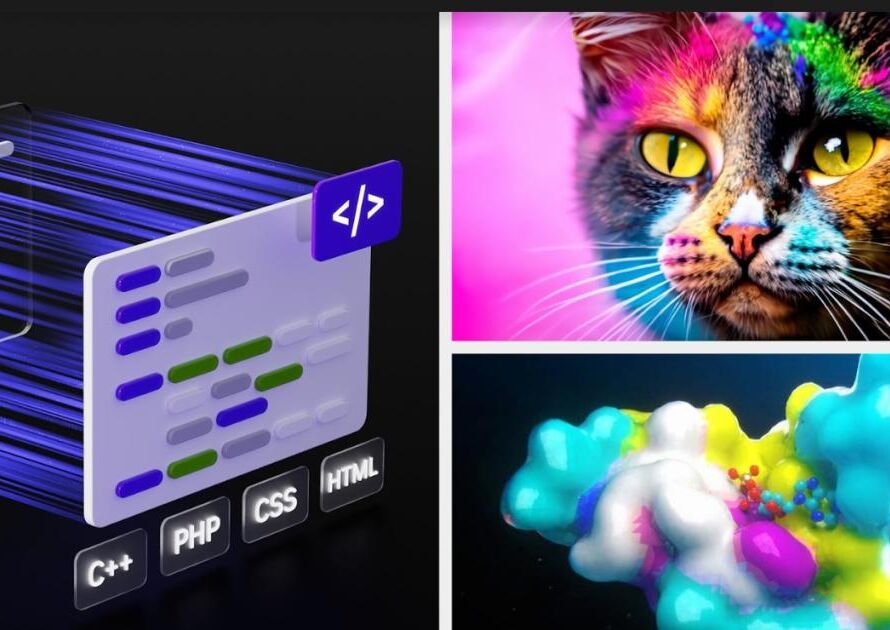Text size

Jensen Huang, president and chief executive officer of Nvidia Corp.
Patrick T. Fallon/Bloomberg
Nvidia
is betting big on the buzziest new technology trend: generative AI.
On Tuesday, the company’s CEO Jensen Huang announced a wide-ranging set of partnerships and products that enable this latest wave of artificial intelligence services—all powered by Nvidia’s semiconductors.
“Generative AI’s incredible potential is inspiring virtually every industry to reimagine its business strategies and the technology required to achieve them,” Huang said during the
Nvidia
(ticker: NVDA) GTC Developer conference keynote address.
Generative AI products train on text, images, and videos in a brute-force manner to create content. Interest in this type of AI has been sparked by OpenAI’s release of ChatGPT late last year. The chatbot uses a language model that generates humanlike responses, or its best guess, based on word relationships it has found by digesting what’s previously been written on the internet or from other forms of text.
Nvidia Chief Financial Officer Colette Kress told Barron’s last month ChatGPT is sparking new conversations with companies and CEOs on the need to develop large language model AI technology. She is optimistic the discussions will drive revenue for Nvidia.
Huang is similarly bullish on the opportunity presented by the rising interest for AI products.
“NVIDIA and our partners are moving fast to provide the world’s most powerful AI computing platform to those building applications that will fundamentally transform how we live, work and play,” Huang said.
The executive announced the company’s latest DGX H100 AI computer systems are in full production and will be coming soon to enterprise customers. The newest DGX H100 incorporates eight Nvidia H100 GPUs, offering much faster performance than its prior A100 system. Nvidia also launched a DGX cloud service, which allows companies to rent AI computing capacity powered by the chip maker’s semiconductors.
“DGX supercomputers are modern AI factories,” he said.
During his presentation, Huang revealed other new cloud services for corporate clients to create their own generative AI large language models that can be trained to use their own internal data. They include Nvidia Picasso for images and video, along with Nvidia BioNeMo for drug discovery.
Adobe
(ADBE) and
Shutterstock
(SSTK) said they would partner with Nvidia and use the Picasso technology to offer better features and capabilities for their customers. And
Amgen
is an early user of BioNeMo to help its drug research and development pipeline. Nvidia says the service could be used to identify potentially useful drug molecules more quickly through large-scale AI training.
Other major technology companies are adopting Nvidia’s technologies. The chip maker announced
Oracle
(ORCL) Cloud Infrastructure will offer Nvidia’s H100 GPU on their platform starting today. Amazon Web Services plans to offer up to 20,000 connected H100 GPUs as a part of an upcoming EC2 service. And Microsoft Azure announced an H100 private preview last week.
Meta Platforms
has now deployed the H100 for its internal AI production and research teams. Finally, Google Cloud will offer Nvidia’s latest L4 AI accelerator card—focused on processing video—to its customers under a private preview too.
Wall Street has been growing more optimistic that Nvidia’s leadership in AI semiconductors could boost its sales in the coming years. Last month BofA Global Research analyst Vivek Arya wrote the adoption of generative AI services will boost demand for the chip maker. Arya estimates the market could help grow Nvidia’s revenue by 25% annually through 2027, leading billions of dollars in additional sales.
If Nvidia’s flurry of announcements at its GTC conference are any indication, the chip maker is all in on this opportunity.
Write to Tae Kim at tae.kim@barrons.com


